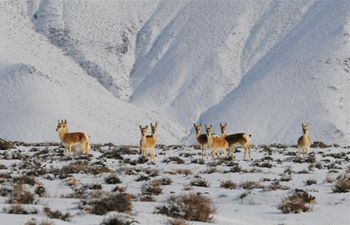CANBERRA, Dec. 13 (Xinhua) -- Researchers from Australia's national science agency have discovered a simple method to predict the lifespan of species' using genomes.
Using the human genome, a team from the Commonwealth Scientific and Industrial Research Organization (CSIRO) found that the maximum natural lifespan of humans is 38 years, which has been prolonged by changes in lifestyle and medical advances over the centuries.
They found that the lifespan of a vertebrate is most likely determined by the density of a DNA change, called DNA methylation.
The team was able to use the same method to reveal the natural lifespans of long-extinct species such as woolly mammoths and Neanderthals, which was found to be 37.8 years.
Ben Mayne, a postdoctoral fellow from the CSIRO's Environomics Future Science Platform, said in a media release that understanding the natural lifespan of different species is critical to ongoing conservation and biosecurity efforts.
"Our method for estimating maximum natural lifespan is based on DNA. If a species' genome sequence is known, we can estimate its lifespan," he said.
"Until now, it has been difficult to estimate lifespan for most wild animals, particularly long-living species of marine mammals and fish," he added.
Researchers calibrated the new method by testing the genomes of animals with lifespans that were already known.
"Using our method, we found the maximum lifespan of the Bowhead whale is 268 years, 57 years longer than people thought," Mayne said.
"We discovered that extinct woolly mammoths lived for 60 years and the recently extinct Pinta Island giant tortoise from the Galapagos lived for 120 years," he said.













